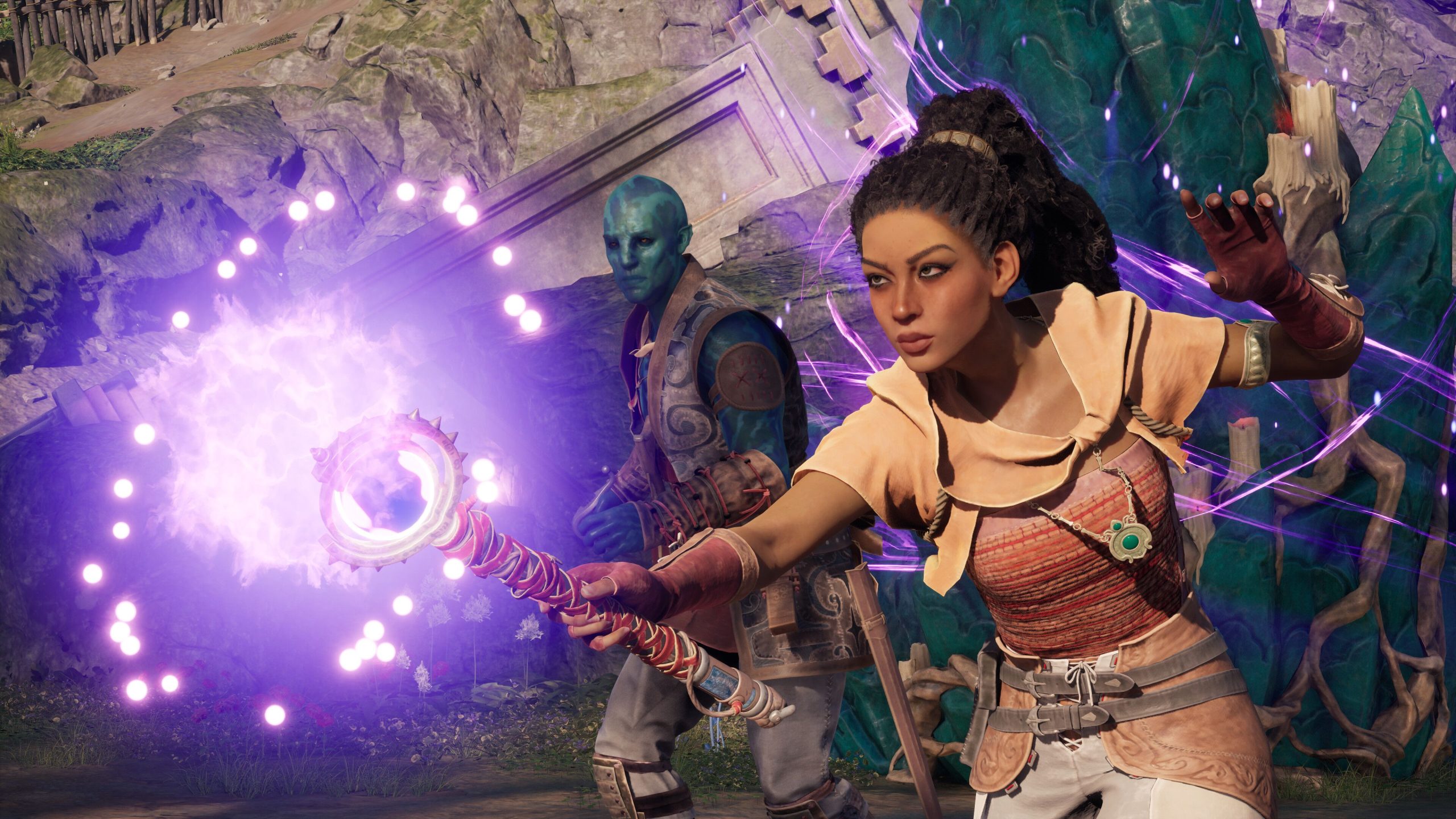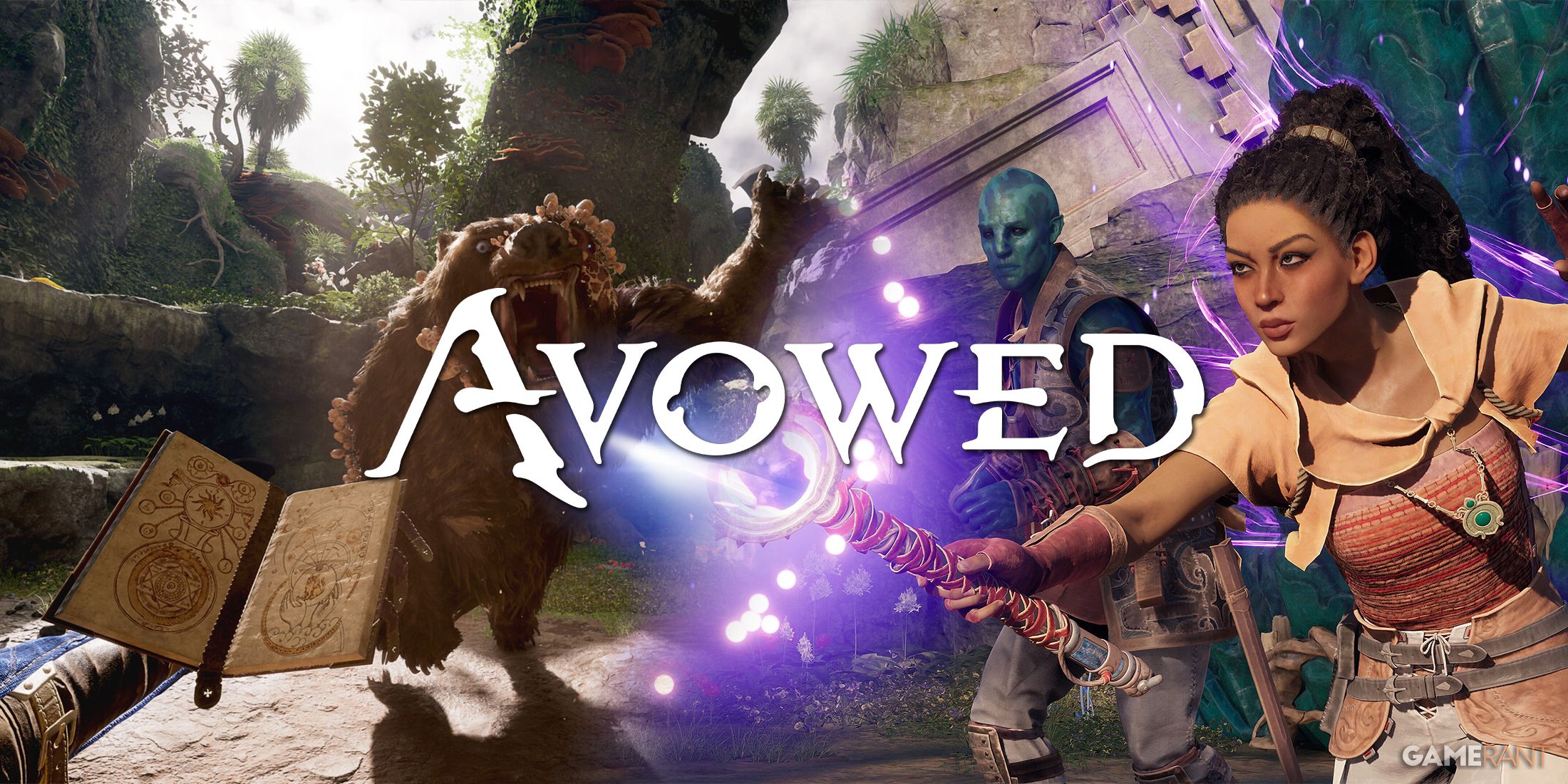The wait is finally over for Avowed, which is now available on PC and Xbox five years after its initial announcement. A new production from the prolific Obsidian Entertainment studio, known for releasing a new game every 2-3 years for nearly a decade, Avowed holds particular significance for certain players, especially those in the RPG community who have been anticipating something akin to Skyrim. The title is frequently compared to Bethesda’s masterpiece of its time, though it may not have been prudent to set such high expectations. My preview at Paris Games Week 2024 last September allowed me to discern both the strengths and weaknesses of the game, and upon completing it, my concerns have regrettably come to fruition: while Avowed offers a classic experience that is comforting and nostalgic, it feels like playing a game from 15 years ago. This presents a considerable challenge for modern players.
The World is Colored
When discussing role-playing games (RPGs), storylines are often at the forefront of player expectations. Obsidian Entertainment, known for its quality writing, had set high standards with Avowed, which players did not anticipate to be simplistic in plot. Fortunately, the game meets these expectations by offering extensive dialogue and numerous choices, some of which unlock based on capacity points. As the story progresses, it becomes more intricate, presenting significant moral dilemmas that affect companion decisions. While diplomacy remains a viable option alongside the temptation for combat, the narrative eventually stagnates in its latter half, lacking nuance and subtlety in favor of simplicity and binary choices. This decline is puzzling given the strong start. If Avowed had positioned itself as a modern or evolving RPG, this might have been more acceptable, but the execution lacks flair. Characters are devoid of life, facial expressions, and the constant dialogue is not complemented by cinematic sequences or stage direction to enhance immersion.
2011
When discussing role-playing games (RPGs), one expects a certain level of consistency in the world and its interactions, but Avowed falls short in this regard. The non-player characters (NPCs) are notably inert, lacking animation loops that would make their presence seem natural; they do not react to anything, and for the most part, they serve merely as decorative elements. This is a stark contrast to what we experienced with Kingdom Come: Deliverance 2, leaving one to wonder about internal developments at Obsidian. The world of Avowed seems to have regressed by approximately 15-20 years, which is disheartening given the respect that developers should afford both players and their product in this aspect. Whether it’s a lack of resources, time, or enthusiasm that has hindered the atmosphere, it’s clear that we are far from what the studio has offered in the past. As I mentioned earlier in my preview, Obsidian has been releasing games since 2015, with a new title every 2-3 years, which is an impressive pace but indicates a near-industrial rhythm rather than careful craftsmanship.
As you are aware, Avowed opts for several large interconnected zones rather than an open world. This approach does not appear to be problematic; instead, it seems that the studio has chosen to refocus its intentions and possibly its technical ambitions accordingly. This decision appears to be a wise choice on their part, given that the game is technically sound overall. Upon closer inspection, however, one might observe that the modeling is not at the cutting edge of current standards. Nevertheless, the design and especially the level design are exceptionally well done, contributing significantly to the game’s immersive quality. Avowed indeed offers breathtaking landscapes enhanced by the variety of biomes within the Living Lands, which provide a rich visual experience encouraging exploration in every direction. In any case, everything has been meticulously designed to encourage players to engage with their environment, and exploration is clearly incentivized through rewards such as treasure chests at the end of quests. It is evident that Obsidian has taken pleasure in its level design, hiding surprises even in the most remote corners, reminiscent of Nintendo’s approach in “The Legend of Zelda: Breath of the Wild.”
However, the game does encounter some lighting issues; it is excessively bright to the point of being distracting, which may be an intentional choice by Obsidian. It is evident that Avowed has been designed to appeal to a wide audience or at least to attract a new segment of players. This intention is clear in its artistic direction and marketing materials, which feature vibrant colors including near-fluorescent tones. While this approach might potentially draw in fans of more colorful aesthetics, it appears to have the opposite effect for others. The internet has humorously dubbed Avowed “Skyrim Rainbow,” a fitting moniker given its visual style. This is a bold decision, and it is commendable to stand by one’s artistic choices, but it raises the question of whether the general public will be drawn to an old-school RPG with such a distinctive flair reminiscent of Fortnite. This could potentially be seen as a marketing misstep, a concern worth serious consideration…
Avowed, developed by Obsidian Entertainment and released on PC and Xbox after five years of anticipation, aims to fill the void left by Bethesda’s Skyrim for role-playing game (RPG) enthusiasts. Known for their prolific output, Obsidian has consistently delivered new games every 2-3 years for nearly a decade. However, while Avowed delivers on Obsidian’s signature storytelling quality with numerous branching dialogue choices and moral dilemmas, it ultimately falls short in narrative development, becoming simplistic and lacking nuance by the game’s second half.The world of Avowed consists of interconnected zones instead of an open world, showcasing impressive level design with diverse biomes that encourage exploration and reward players with hidden treasures, reminiscent of Nintendo’s Breath of the Wild. Despite this, non-player characters (NPCs) are strikingly inanimate, offering little to no animation or interaction, which contrasts sharply with recent advancements in RPG development.Visually, Avowed presents a vibrant art style with an abundance of bright colors that have earned it the moniker “Skyrim Rainbow.” While this bold aesthetic choice attempts to attract a broader audience, some critics question its effectiveness in drawing in players accustomed to modern gaming trends.In summary, Avowed offers an old-school RPG experience with notable strengths like compelling narrative choices and well-crafted levels but struggles with simplistic storytelling and dated NPC interactions. Its vibrant visual style may appeal to some but risks alienating others due to its unconventional aesthetic approach, leaving one to ponder if this bold marketing strategy might have misfired in capturing the desired audience for an old-school RPG.
The decision to cater to a broader audience is reflected in the gameplay, which emphasizes action with simplified mechanics offering increased flexibility. In Avowed, player choices are not set in stone; characters can be developed through three skill trees, and players have the option to alter their paths if they change their minds. This approach aims to provide players with some freedom without frustrating them, an aspect I appreciate. For instance, a player can start as a barbarian and switch to being a mage if desired. Another indication of Obsidian’s broader scope is the ability to wield any type of weapon in either hand, allowing for various combinations that are both quirky and thrilling, enhanced by the option to change loadouts with a press of the Y button, thereby increasing possibilities and adaptability to threats. Typically, such flexibility is reserved for two-handed weapons alone.
In this game, you can add projectiles like grenades or fireballs and utilize both your skills and those of your companions through an armory wheel, with shortcuts available for seeking assistance in specific situations. If your teammates assist you, remember to revive them if they fall during combat. Much like numerous RPGs, managing the stamina gauge is crucial to stay alert and chain together high-quality attacks, as enemies often outnumber you and are quite resilient. Escape is never shameful, and you can exploit enemy pathfinding struggles to create ideal reversal opportunities. On paper, this system works well, especially as you progress in the game, unlocking new weapons and abilities that enable cool and satisfying combos. There’s also a dash-evade system allowing sidesteps to avoid enemies. However, this highlights the limitations of Avowed’s combat system, which is entangled with underdeveloped AI that struggles to keep up with the player. Developers appear to have favored players, as enemies react less than optimally and display highly predictable patterns. Retreating, waiting for enemy animations to end, circling around them, and striking becomes literally the ultimate solution against anyone, even bosses.
Avowed has been designed for the general public, yet it is unclear whether this demographic will genuinely be interested in a game with such a niche proposition. There are persistent inconsistencies between intended goals and actual results, as if two separate teams were developing different aspects without coordination. The game aims to provide more flexible and accessible combat mechanics, but outdated animations persist, rigid like skeletal movements. I have not even addressed the frustrating inertia that sometimes causes missed attacks, affecting both players and enemies alike and diminishing gameplay enjoyment. Despite a vintage Skyrim feel, we are no longer in 2011; the lack of combat finesse is particularly noticeable in 2025.
DO NOT LOOK IN THE SAME DIRECTION
And then, to make matters worse, Avowed also suffers from an excessive focus on loot. There are so many chests and items to collect that eventually, players may become tired of it. The joy of discovering chests diminishes because there are simply too many of them. This suggests that the developers were concerned about scaring off a broad audience attracted by the game’s light, flashy colors and its resemblance to Fortnite. In short, there is a real issue with the coherence of Avowed’s approach, like an Hydra with two heads going in different directions without clear guidance. The problem lies in not knowing who the target audience for Avowed is. This contrasts sharply with Kingdom Come 2, which has a clear and well-defined proposition targeting a specific audience and sticking to it. As usual, attempting to please everyone often results in pleasing no one…
Have any thoughts?
Share your reaction or leave a quick response — we’d love to hear what you think!



